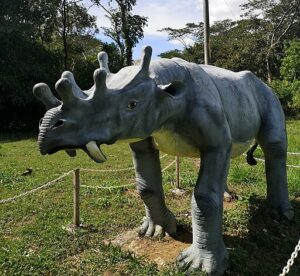Titanoboa
- When: Paleocene
(60–58 mya) - Where: South America
- What: Snake
- Weight: 1.1 metric tons
- Length: 13 meters
- Diet: Carnivorous
- Discovered: 2009
The Cenozoic Era: The Age of Mammals
What Happened After the Dinosaurs? The Cenozoic Era!
The Cenozoic Era began about 66 million years ago, right after the dinosaurs went extinct. This era is often called the “Age of Mammals” because mammals became the dominant animals on Earth. The Cenozoic is divided into three main periods, each with its own special events and amazing creatures.
The Cenozoic Era is divided into three periods:
Paleogene Period (66 to 23 million years ago)
– Rise of Mammals: With the dinosaurs gone, mammals grew bigger and more diverse. Early types of horses, elephants, and whales started to appear.
– First Grasses: Grasslands began to spread, providing new habitats and food for grazing animals.
– Birds and Insects: Birds became more diverse and insects flourished, filling the skies and forests with life.
Neogene Period (23 to 2.6 million years ago)
– Modern Mammals: Many of the animals we see today, like giraffes, lions, and bears, began to evolve. Early humans, called hominids, also appeared.
– Expanding Grasslands: Grasslands and savannas covered large areas, supporting herds of animals like antelope and zebras.
– Ocean Life: Marine life, including sharks, whales, and dolphins, became more varied and widespread.
Quaternary Period (2.6 million years ago to present)
– Ice Ages: The Earth experienced several Ice Ages, where large ice sheets covered parts of the planet. Mammoths, woolly rhinos, and saber-toothed cats lived during these cold times.
– Rise of Humans: Modern humans (Homo sapiens) evolved and spread around the world. They developed tools, built shelters, and began farming.
– Today’s World: We live in the latest part of the Quaternary Period, called the Holocene Epoch. This is the time when human civilization has grown and changed the planet.

